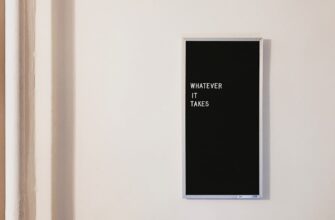- What is Swing Trading BNB on Bybit?
- Why the 15-Minute Timeframe is Perfect for Beginners
- Getting Started: Setting Up Your Bybit Account
- Key Strategies for 15-Minute BNB Swing Trading
- Trend Following with Moving Averages
- Support and Resistance Breakouts
- RSI Divergence Strategy
- Risk Management: Protect Your Capital
- Common Beginner Mistakes to Avoid
- Frequently Asked Questions (FAQ)
- How much capital do I need to start swing trading BNB on Bybit?
- Can I use leverage for BNB swing trading?
- How many trades should I make per week?
- What time is best for analyzing 15-minute BNB charts?
- Do I need technical indicators beyond EMAs and RSI?
- How long should I hold swing trades?
What is Swing Trading BNB on Bybit?
Swing trading BNB on Bybit involves holding positions for several hours to days to capture price swings in Binance Coin (BNB) using the crypto derivatives exchange. Unlike day trading, it doesn’t require constant screen time—making the 15-minute chart ideal for beginners. This timeframe balances noise reduction with timely signals, letting you spot trends while avoiding the stress of shorter intervals.
Why the 15-Minute Timeframe is Perfect for Beginners
The 15-minute chart strikes a sweet spot for new swing traders:
- Manageable Analysis: Fewer false signals than 1-minute or 5-minute charts
- Reduced Stress: No need for split-second decisions
- Clear Trends: Captures intraday momentum without overwhelming data
- Time Efficiency: Check charts 2-4 times daily instead of constant monitoring
Getting Started: Setting Up Your Bybit Account
Follow these steps to begin swing trading BNB:
- Sign up on Bybit and complete KYC verification
- Deposit funds (USDT recommended for simplicity)
- Navigate to Derivatives > USDT Perpetual and select BNBUSDT
- Adjust your chart settings: Set timeframe to 15 minutes
- Enable basic indicators like Moving Averages (50 & 200 periods)
Key Strategies for 15-Minute BNB Swing Trading
Trend Following with Moving Averages
Use two Exponential Moving Averages (EMAs):
- Entry: Buy when 50 EMA crosses above 200 EMA (Golden Cross)
- Exit: Sell when 50 EMA crosses below 200 EMA (Death Cross)
Support and Resistance Breakouts
Identify horizontal price levels where BNB repeatedly reverses. Trade breakouts:
- Enter long when price closes above resistance
- Enter short when price closes below support
- Set stop-loss 2-3% below entry for risk control
RSI Divergence Strategy
Spot reversals early with Relative Strength Index (RSI):
- Bullish divergence: Price makes lower lows while RSI makes higher lows → Buy signal
- Bearish divergence: Price makes higher highs while RSI makes lower highs → Sell signal
Risk Management: Protect Your Capital
Survive your learning curve with these rules:
- Never risk >1% of account per trade
- Always set stop-loss orders immediately after entering
- Take profit at 2:1 reward-to-risk ratio minimum
- Trade only 10-20% of portfolio to avoid overexposure
Common Beginner Mistakes to Avoid
- Overtrading: Stick to 1-2 high-probability setups daily
- Ignoring Fees: Bybit’s taker fee (0.06%) eats profits on small swings
- Chasing Pumps: Enter only at confirmed support levels
- Emotional Exits: Follow your strategy, not FOMO or panic
Frequently Asked Questions (FAQ)
How much capital do I need to start swing trading BNB on Bybit?
Start with at least $200-$500 to manage risk effectively. Smaller amounts magnify fee impacts.
Can I use leverage for BNB swing trading?
Yes, but limit to 5x-10x maximum as a beginner. Higher leverage increases liquidation risk during volatility.
How many trades should I make per week?
Aim for 3-5 high-quality setups weekly. Quality over quantity prevents overtrading.
What time is best for analyzing 15-minute BNB charts?
Check charts during high-volume periods: Asian morning (00:00-04:00 UTC), European open (07:00-10:00 UTC), and US open (13:00-16:00 UTC).
Do I need technical indicators beyond EMAs and RSI?
Start simple. Add Volume Profile or MACD later. Too many indicators cause analysis paralysis.
How long should I hold swing trades?
Typically 6 hours to 2 days on 15-minute charts. Exit when your target hits or the trend breaks.
Mastering BNB swing trading on Bybit’s 15-minute charts demands discipline but offers strategic advantages for time-constrained beginners. Start small, prioritize risk management, and let the probabilities work in your favor.








